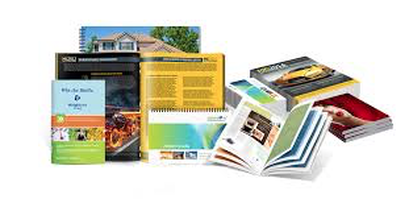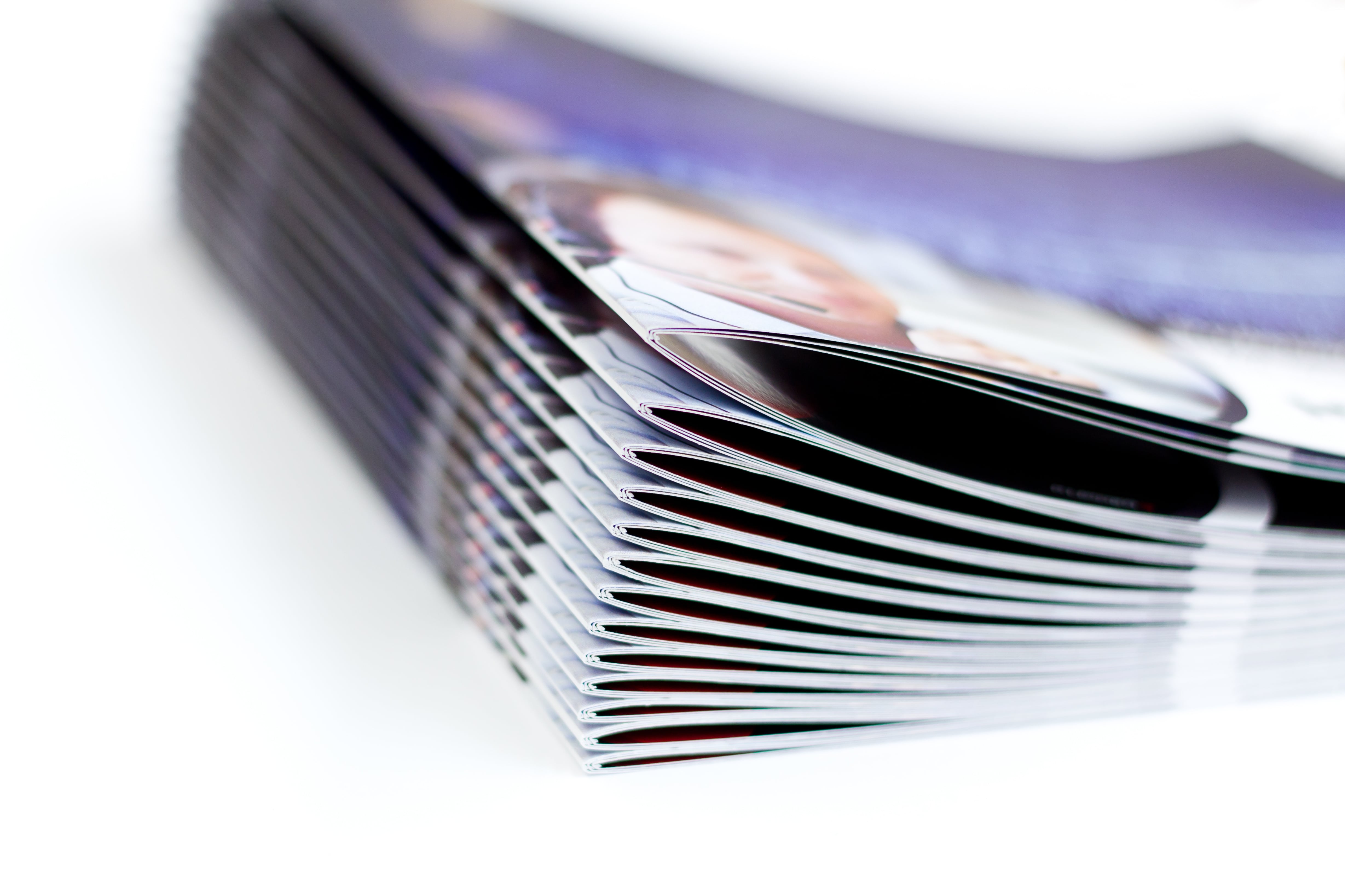10 Innovative Ways Booklet Printing Is Revolutionizing Promotional Campaigns
10 Innovative Ways Booklet Printing Is Revolutionizing Promotional Campaigns
Blog Article
The Necessary Guide to Comprehending Brochure Printing Options and Techniques
The procedure of booklet printing includes several considerations that can significantly affect the end product. From selecting the ideal style and size to understanding the nuances of binding methods, each choice plays a necessary role. Additionally, variables such as paper supply and printing methods more influence the efficiency of the brochure. As one navigates these choices, it becomes imperative to realize just how they adjoin and what that indicates for the total result.
Recognizing Booklet Sizes and formats
When taking into consideration booklet printing, recognizing the numerous formats and sizes available is necessary for achieving the desired discussion. Booklets can be created in numerous styles, including saddle-stitched, spiral-bound, and perfect-bound, each offering distinctive advantages. Common dimensions vary from basic letter (8.5 x 11 inches) to smaller sized choices like A5 (5.8 x 8.3 inches), allowing for versatility based on material and target audience.Selecting the proper dimension can influence both the design and reader interaction. Larger dimensions could fit aesthetically driven material, while smaller sized styles may be much more mobile and straightforward. In addition, the number of web pages influences the choice of binding method, as thicker pamphlets might require sturdier bindings. Eventually, understanding these aspects allows for an extra tailored technique, guaranteeing that the end product lines up with the designated message and visual, boosting the general effectiveness of the communication.
Selecting the Right Paper Stock

Binding Approaches: Choices and Factors To Consider
When it pertains to binding approaches for booklets, a number of choices are readily available, each with distinct advantages. Saddle stitch binding uses a cost-effective option for thinner brochures, while best binding strategies provide a more refined search for thicker magazines. Wire-O binding attracts attention for its resilience and simplicity of use, making it suitable for records that call for flexibility.
Saddle Stitch Binding
Saddle stitch binding offers a useful and economical remedy for assembling booklets, making it a popular choice among authors and businesses. This binding approach entails folding sheets of paper in fifty percent and stapling them along the fold line, developing a cool and orderly appearance. Typically ideal for brochures with a reduced page matter, saddle stitching is optimal for publications, pamphlets, and training materials. The simpleness of this strategy permits quick production and is often preferred for advertising products or short runs. However, it is essential to keep in mind that saddle stitch binding might not appropriate for thicker brochures, as the spine might not stand up under enhanced weight. Generally, it stays a reputable option for several printing jobs.
Perfect Binding Techniques
Perfect binding is a commonly utilized strategy that supplies a expert and sleek surface to pamphlets and publications. This approach entails gluing the web pages together at the back using a solid adhesive, allowing for a tidy side and the capability to hold a bigger number of web pages contrasted to saddle stitching. Perfect binding is specifically suitable for thicker brochures, such as catalogs and annual records, where a sturdy, level back is desired. In addition, it offers the choice for a published cover that can be designed to improve aesthetic appeal. Factors to consider such as page count, paper weight, and the planned usage of the brochure must be taken right into account, as they can influence resilience and general top quality.
Wire-O Binding Alternatives
Wire-O binding, known for its resilience and versatility, uses an excellent option for booklets that require simple page turning and an expert appearance. This binding approach employs a series of metal loops that hold pages securely, allowing them to lie flat when open. It is particularly suitable for guidebooks, catalogs, and discussions due to its robust nature. Wire-O binding is readily available in numerous shades and diameters, accommodating different web page matters and thicknesses. Additionally, it allows the incorporation of tabs and covers, improving the booklet's overall visual. Factors to consider for Wire-O binding include the choice of cord shade, the size of the loopholes, and the degree of personalization preferred, all of which can greatly affect the end product's appearance and functionality.
Digital vs. Offset Printing: Which Is Best for You?
When selecting a printing approach for brochures, understanding the distinctions between electronic and balance out printing is vital. Digital printing utilizes modern-day technology to produce top notch prints promptly and affordably, making it optimal for brief runs or tasks calling for fast turnaround times. It enables modification, offering the capacity to print on-demand with marginal waste.In contrast, counter printing is a conventional approach that stands out in generating big amounts with consistent top quality. It involves moving ink from a plate to a rubber blanket, then to the paper, which causes dynamic shades and accurate information. Nonetheless, balance out printing commonly needs longer arrangement times and is more economical for bigger volumes.Ultimately, the choice in between electronic and offset printing depends upon task needs, budget, and preferred amount. For small, time-sensitive projects, digital may be the very best selection, while offset may be more suitable for larger, high-grade manufacturings.

Designing Your Brochure: Tips and Best Practices
When designing a booklet, mindful focus to design, font style choice, and color usage can substantially improve its efficiency. A well-structured layout overviews the viewers's eye, while proper font styles guarantee readability and convey the wanted tone. Furthermore, effective usage of shade can evoke emotions and highlight crucial look at here details, making the total style more impactful.
Selecting the Right Format
Exactly how can one efficiently choose the appropriate design for a booklet? Initially, it is important to assess the pamphlet's function and target audience. A clean, arranged design enhances readability and involvement. Using additional reading a grid system can aid in lining up elements continually, producing a specialist appearance. In addition, incorporating aesthetic hierarchy via varying dimensions and positionings of pictures and message can guide the visitor's eye and emphasize crucial details. It is likewise vital to leave adequate white space, which protects against overcrowding and enables for far better focus. Lastly, examining different designs via mock-ups can offer understanding right into how the style executes in real-world scenarios, making sure that the last item meets both aesthetic and useful demands.
Picking Proper Fonts
An appropriate font style can greatly boost the general design of a pamphlet, complementing the format and strengthening the content's message. The option of font styles should take into consideration readability, especially for body message, as it guarantees the info comes to all viewers. Sans-serif typefaces are typically chosen for electronic styles, while serif font styles can provide a standard feel in printed materials. It's recommended to limit font selections to 2 or 3 to preserve visual coherence. In addition, typeface dimension plays an essential role; headings should be distinctive yet not frustrating, while body message ought to be comfortable for analysis. When choosing fonts, alignment with the pamphlet's style and target audience is vital for effective interaction and visual appeal.
Reliable Use Color
Shade serves as an effective tool in booklet style, shaping understandings and guiding reader emotions. It can stimulate feelings of trust, peace, or exhilaration, relying on the shades selected. Developers must think about shade concept principles, ensuring that the picked combination aligns with the pamphlet's message and target market. Making use of warm colors like red and orange can produce seriousness, while cooler tones like environment-friendly and blue foster tranquility.Additionally, comparison plays a vital role; complementary colors can improve readability and visual charm. Uniformity in shade use throughout web pages additionally reinforces brand name identification and communication. Inevitably, reliable shade execution not just records focus however additionally enhances the pamphlet's objective, making it an essential aspect of successful layout.
Ending Up Touches: Coatings and Unique Results
While many take into consideration the web content and design of a brochure the most vital aspects, the finishing touches, such as coverings and special results, play a crucial duty in improving its general appeal. Coatings can provide defense and longevity, making certain that the brochure endures wear and tear. Matte coatings supply an advanced, non-reflective surface, while shiny finishes can make colors appear even more attractive and vivid. Unique effects, like embossing or aluminum foil stamping, include a tactile dimension that can produce a memorable impact. have a peek at this website These methods can highlight specific locations, accentuating essential information or creating visual interest. In addition, UV coating can give a high-shine coating that boosts the general look.Together, these completing touches not only improve the booklet's visual but additionally communicate professionalism and interest to information, eventually leaving a lasting influence on the reader.
Expense Considerations for Brochure Printing
Understanding the various expense considerations for brochure printing is necessary for companies and companies intending to enhance their spending plans. Secret variables influencing expenses consist of the selection of binding, ink, and paper techniques. Better materials, such as superior paper or specialized inks, normally increase the overall cost. Furthermore, the dimension and web page matter of the booklet play a significant function; bigger booklets require more sources and time to produce.Another crucial factor to consider is the printing strategy, whether digital or offset, as each has its own pricing structure and suitability for different quantities. Companies must additionally consider layout prices, which can differ based upon intricacy and making use of specialist solutions. Inevitably, delivery and handling charges can include in the overall, particularly for big orders. By examining these aspects, organizations can make educated decisions that straighten with their financial capabilities while achieving the desired quality in their published products.
Regularly Asked Questions
What Are the Environmental Effects of Pamphlet Printing?
The ecological impacts of brochure printing include logging from paper manufacturing, carbon exhausts from transportation, and waste generation from disposed of materials - Booklet Printing. Lasting techniques, such as utilizing recycled paper and environment-friendly inks, can reduce these effects
Just How Can I Make Certain Color Accuracy in My Pamphlet?
To ensure color precision in a brochure, one ought to make use of adjusted screens, use specialist shade profiles, perform test prints, and pick top quality printing solutions that supply color matching and proofing options for ideal results.
What Is the Typical Turn-around Time for Booklet Printing?
The regular turnaround time for brochure printing varies depending upon the complexity and amount - Booklet Printing. Typically, it varies from a few days to 2 weeks, influenced by variables such as printing approaches and ending up demands
Are There Minimum Order Quantities for Brochure Printing?

Can I Publish Booklets in Several Languages?
Publishing pamphlets in multiple languages is possible. Numerous printing services use alternatives for multilingual or multilingual layouts, permitting effective communication. Cautious preparation assurances that make components suit various languages without compromising readability or aesthetic appeals. In addition, variables such as paper supply and printing strategies more affect the performance of the pamphlet. When taking into consideration pamphlet printing, recognizing the numerous layouts and dimensions offered is crucial for attaining the wanted discussion. When picking a printing approach for booklets, understanding the differences between electronic and counter printing is essential. Furthermore, the size and web page matter of the brochure play a considerable role; larger pamphlets call for more resources and time to produce.Another vital factor to consider is the printing method, whether digital or offset, as each has its very own prices framework and suitability for different amounts. The environmental effects of booklet printing include deforestation from paper manufacturing, carbon emissions from transportation, and waste generation from thrown out products.
Report this page